The Los Angeles Kings had four players, not including rookies, who posted breakout, and career seasons in 2021-22. Adrian Kempe, Phillip Danault, Trevor Moore, and Mikey Anderson all took big steps in the right direction and played the best hockey of their careers. After a big season like these four had, the question is, can they replicate that success in 2022-23? I wanted to look at their season, and their numbers, and try to predict how sustainable their seasons were.
Phillip Danault
The Kings signed Danault to a six-year, $33 million contract last summer, intending to give him a more offensive role than he saw with the Montreal Canadiens. The team felt he could be more than a shutdown, defense-first center, and they were correct. He scored 27 goals, 14 more than his previous career-high of 13, 51 points, two less than his career-high of 53, and posted fantastic analytics as well. His 9.2 offensive goals-above-replacement, according to EvolvingHockey.com, was the second-best of his career. He also ranked in the top one percent of offensive impact according to TopDownHockey’s model.
Related: Kings Prospects Who Can Have an NHL Impact Next Season
The positive analytics doesn’t stop there either, according to AllThreeZones’ tracking data, he posted well above league average metrics in every category except for rebounds created and zone entries. His shot and chance creation numbers were especially impressive, as he finished with just over 11 shots per 60, and nearly 15 shot assists per 60. He also created a high number of chances both off the rush and in the cycle, pointing to a dominant, dual-threat offensive player. A big concern with a player making such a big jump in goals is an unsustainable shooting percentage. Fortunately, that isn’t the case with Danault as his 13.9% shooting percentage (S%) is a little high, but not crazy, and he scored just one goal above expected. Another positive is where he scored his goals, as all but two of his 27 goals came from between the hash marks and below the faceoff circle.
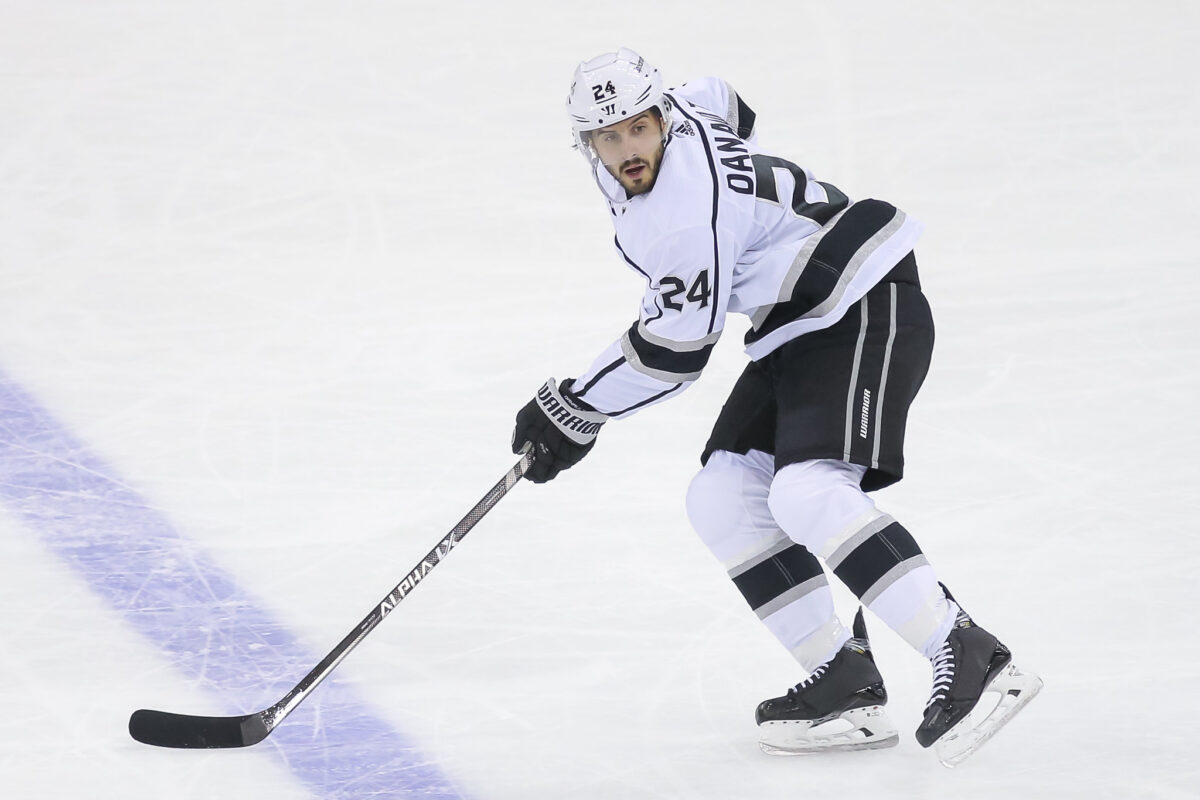
All of these numbers point to another great season for Danault in 2022-23. There’s no indication that his numbers were lucky or unsustainable, instead, he looks like a player who thrived in a more offensive role. His chemistry with Viktor Arvidsson and Moore, who will both return next season, is another reason to be confident in Danault replicating his success. Chemistry is something you can’t put a value on and will lead to another big season. Of all the players on this list, he is the player I’d be most confident in repeating his breakout season.
Trevor Moore
From Danault to his linemate, Moore. Posting career highs in goals, assists, and points, he had the most surprising breakout season amongst those on the list. After a slow start to the season, which prompted one foolish writer to suggest he be demoted to the fourth line, Moore turned things around in December. He would soon be promoted to Danault’s line, a catalyst for him to lead the team in points for the second half of the season, as he finished with 17 goals and 31 assists for 48 points. Analytically, he was second on the team with 1.5 wins-above-replacement and 8.3 goals-above-replacement.
Like Danault, he showed up impressively in AllThreeZones’ tracking data, posting positive results in all offensive areas except rebounds created. His playmaking numbers were below Danault’s, but he posted superior transition numbers. He also posted similar shot and shot assist numbers per 60, with 12.09 and 11.29 respectively. Creating chances on the rush and through the cycle at almost the same rate, he was also a dual-threat offensively. Impressively, 20 of his 31 assists were primary assists. The only negative in Moore’s game last season was his finishing. He’s never been a natural goalscorer or finisher, but last season was especially poor, as he finished the season tied for fourth-worst in goals-above-expected with a minus-8.1 and a S% of just 8.4. It could be argued that this would indicate an increase in goals next season, as he should be closer to his expected goals, but as a career 9.7 percent shooter I wouldn’t be too confident.
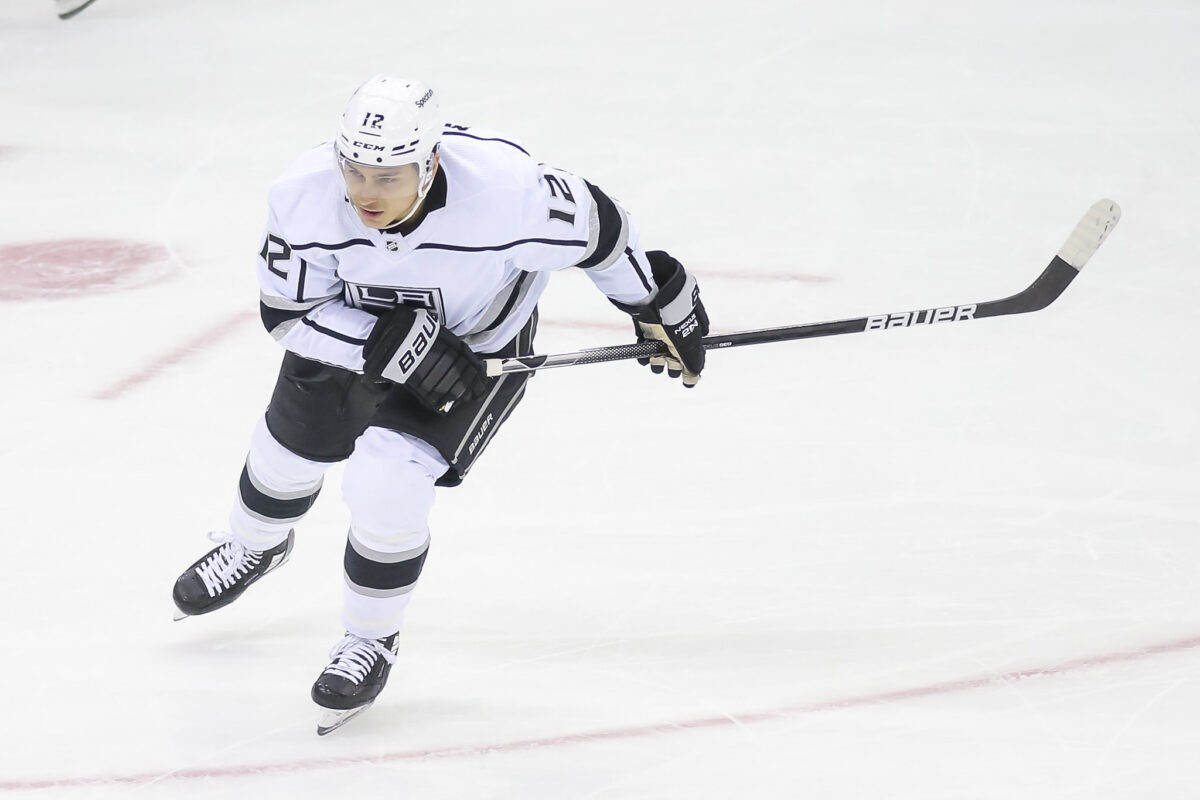
Fortunately, Moore doesn’t need to be an excellent finisher to be an effective player and repeat his success last season. If he can continue creating shots and chances, while also playing at a very high pace, like he did last season, he will have another great year. I wouldn’t be confident in him increasing his totals by much, but a 50-55-point season seems more than doable. His game relies on hard work and intelligent play, two things I don’t see falling off, the Thousand Oaks native has the chance to defy expectations and prove he is a legitimate top-six forward in the NHL.
Adrian Kempe
Kempe has been a polarizing player amongst fans for a while now, and the sustainability of his success is one of the more divisive topics in Kings’ circles. He finished with a career-high 54 points, but it was his monstrous 35-goal season that caught headlines. It was the first 30-goal season by a King since Anze Kopitar grabbed 30 in 2017-18 and it was Kempe’s move onto Kopitar’s wing that facilitate this offensive explosion.
His season was also divisive amongst the analytics community, with EvolvingHockey scoring his overall impact in the 34th percentile and his offensive impact in the 69th percentile. While TopDownHockey’s model placed him in the 73rd percentile overall and 90th percentile in offensive impact. The difference comes from how the two models weight finishing and goalscoring, with TopDownHockey’s model placing a much higher emphasis on the two.
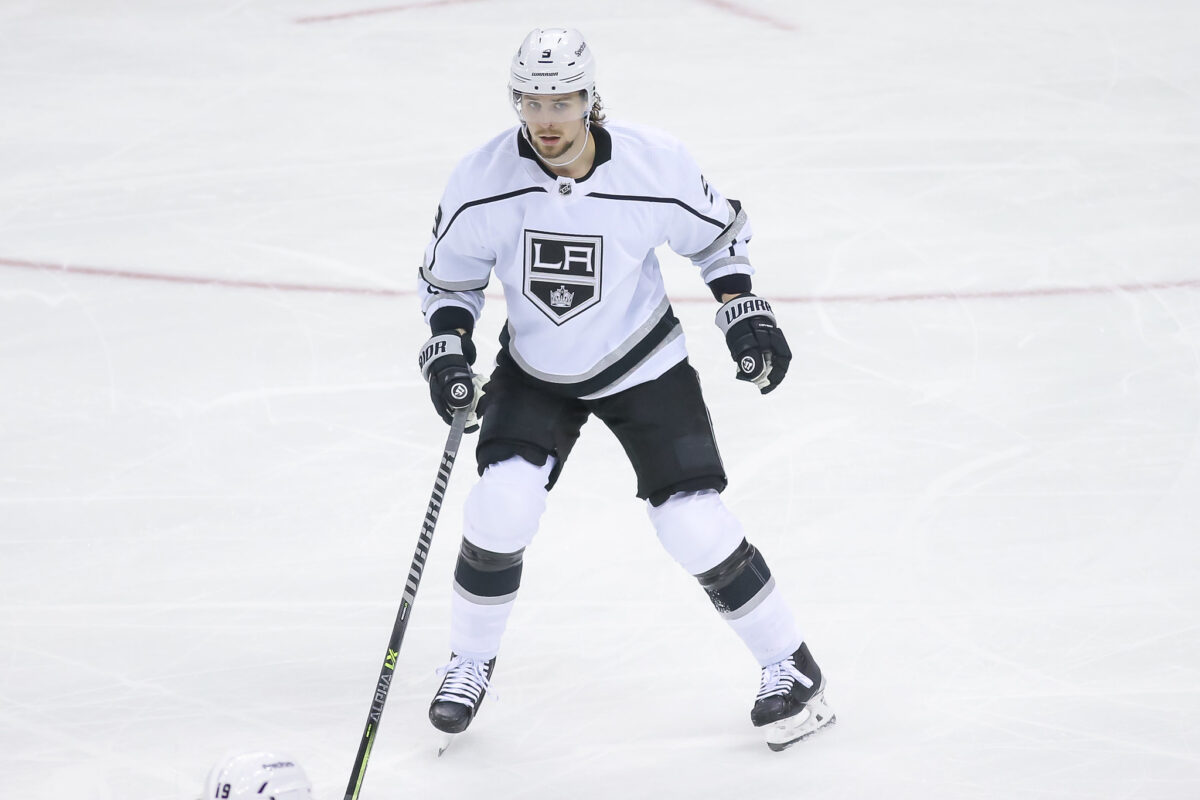
The one area they both agree on is that Kempe was not good defensively last season, with both placing him in the bottom five percent. Going back to his finishing, like with Danault, there’s a concern that his goalscoring is unsustainable, as he finished with a S% of 14.2 and five goals above expected. His shooting percentage was three percent above his career average, but not unsustainable and the same can be said about his goals-above-expected. Of the league’s 35-plus goalscorers, only three scored less than five goals above expected, Connor McDavid, Sebastian Aho, and Timo Meier. His goalscoring is relatively sustainable, so long as he continues to shoot at a high volume and get himself into goalscoring positions.
Another area of criticism for Kempe was his playmaking, grabbing just 19 assists, but I’m confident that will improve next season. Like Danault and Moore, he created shots and shot assists at above league average. Only Danault, Arvidsson, and Dustin Brown had more chance assists, per 60 minutes, and his nearly two high danger shot assists per 60 were also third-best on the team. His two most common linemates, Kopitar and Alex Iafallo both had down years in their finishing, as both were below 10 percent shooters and underscored their expected goals which negatively impacted Kempe’s numbers.

I’ve said many times that I’m confident in Kempe sustaining his breakout season. He might not score 35 goals again and I don’t think it’s fair to expect that, but I do expect him to continue to be a top-line player. Assuming he has a new linemate next season, either an external addition or a prospect like Arthur Kaliyev, it’s safe to say his assist totals will rise without any fall-off in goals. He has always possessed the tools to be a dynamic forward, with a unique blend of size, speed, and skill and it appears he is finally reaching his ceiling. I wouldn’t expect a big drop-off from him, somewhere around 55 points is a fair bet, possibly more if his new linemate has a big season.
Mikey Anderson
The quietest breakout season amongst these four players, Anderson’s was one of the most impressive. His eight points in 57 games don’t scream “breakout season” but his game isn’t about offense. He established himself last season as Drew Doughty’s partner on the top pairing and proved this season that he is a top-pairing defenseman. In an article for The Athletic, Harman Dayal put together a graph showing how each defenseman was deployed. It showed Anderson playing tough minutes, with the majority of his ice time coming against “elite” competition (from ‘Which NHL defencemen have (and haven’t) earned their coach’s trust? Analyzing matchup data from all 32 teams’, The Athletic, 2/10/22).
A big reason he is able to play these minutes is because of how safe he is with the puck. Anderson gets the puck out with possession at a rate above league average and sits near the bottom of the league in mistakes made on the breakout. Players also rarely gain the zone on Anderson with possession and rarely create a chance off the rush when attacking him.
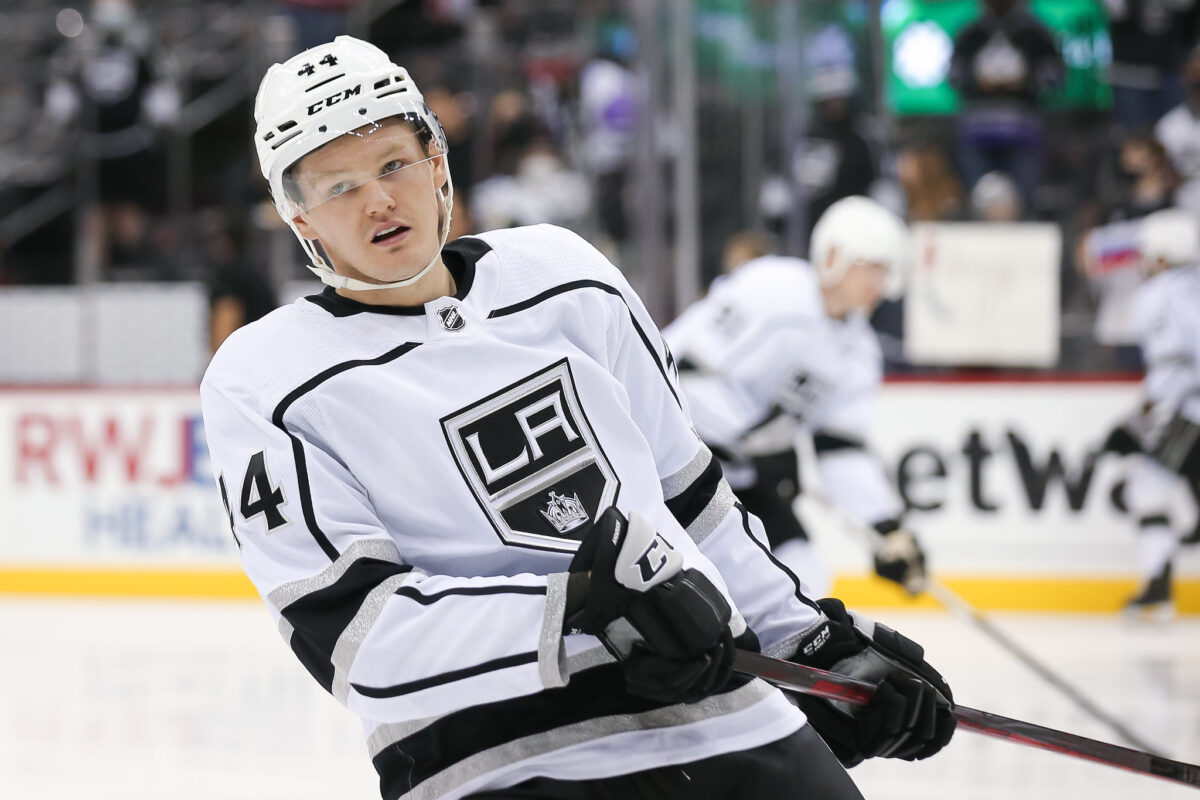
In a different article at The Athletic, Dayal ranked Anderson as the eighth-best shutdown defensemen in the league, sitting between Matt Grzelcyk and K’Andre Miller. He had this to say about Anderson’s game.
“Matt Grzelyck and Mikey Anderson are a reminder that defensive value isn’t always driven by elite in-zone defense. Grzelyck and Anderson are competent in their own end, but they shine because they’re elite skaters who do an excellent job of moving the puck. They play defense by virtue of almost always ensuring their team has puck possession — they don’t have to defend without the puck much in the first place” (from ‘Who are the NHL’s best shutdown defensemen and why are they so valuable?’, The Athletic, 4/27/22).
Anderson is the perfect complement to the more aggressive Drew Doughty, as they formed a rock-solid partnership on the team’s top-pairing. He isn’t just a product of Doughty, though, as the former Norris Trophy winner missed significant time due to injury this season, and Anderson stepped up. His partnership with fellow young defensemen Tobias Bjornfot was effective early in the season, and he formed a solid shutdown partnership with Matt Roy during the playoffs. While I’ve focused on just the regular season with the previous three players, I have to discuss the postseason with Anderson.
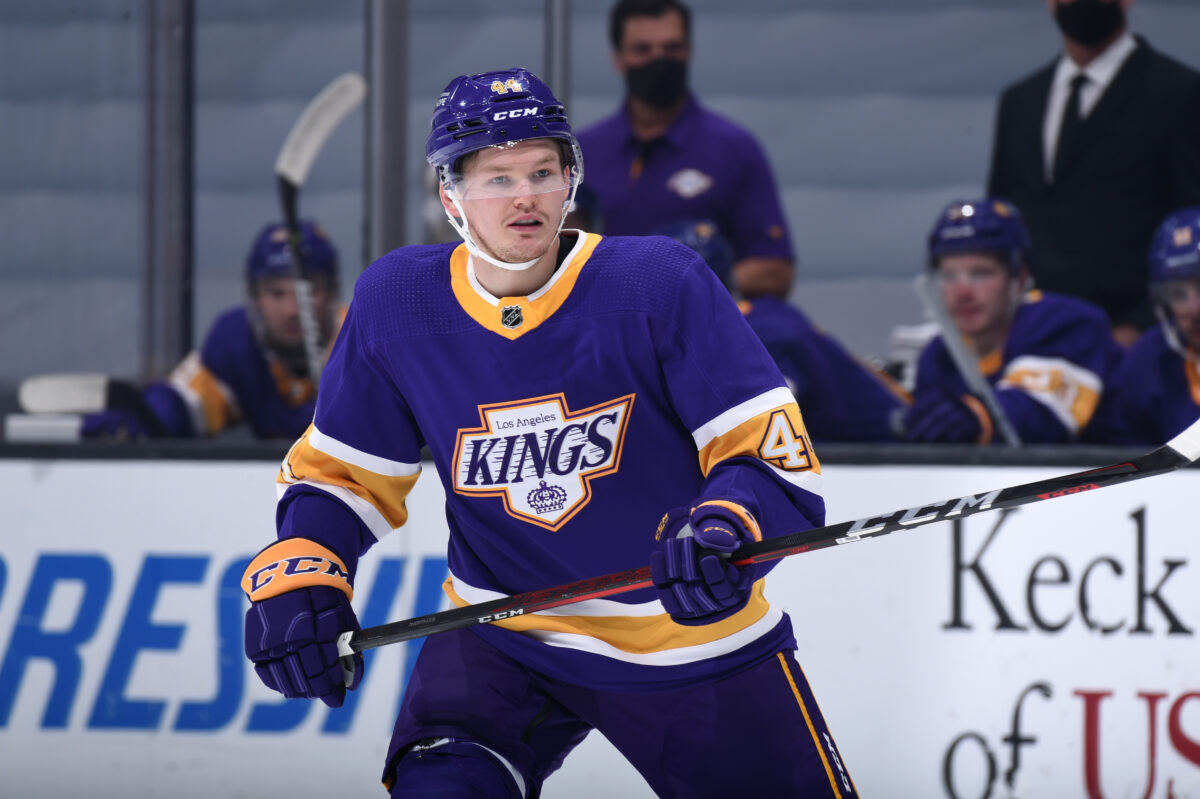
Anderson stepped up against the Edmonton Oilers in Doughty’s absence, playing heavy minutes once again. His pairing with Roy allowed just three goals against at 5v5 in six games, playing mostly against Connor McDavid or Leon Draisaitl, often both. You won’t find more elite competition than those two and he rose to the challenge. He was physical, leading the team with 28 hits, hard to play against, and safe with the puck. If he can continue that play into next season, he’ll continue climbing the list of best shutdown defensemen, and will be someone opposition teams dread playing against. I’ve said it before, he reminds me a bit of former Kings defensemen Willie Mitchell, a shutdown, no-nonsense blueliner who makes life difficult for the opposition. As such, Anderson should anchor the blue line for years to come.
Kings Need Continued Success From Breakout Stars
The Kings shocked several people last season by making the playoffs, and the play of these four was a big reason that happened. If they want to make a postseason return in 2022-23, they need them to continue this stellar play. All four posted sustainable results and their numbers don’t give any indication of falling off next season, but it’s always a possibility. One thing that will be interesting to see, is how opposition teams approach these players after their breakouts, particularly Kempe and Moore, as they will be more aware of Kempe’s goal threat and gameplan accordingly and will be familiar with the offensive threat Danault’s entire line carries. Extra attention from defensemen could harm both players’ production, but that’s what you have to overcome as a top player in the NHL.
If I had to guess which player wouldn’t repeat their success, it would be a toss-up between Kempe and Moore. Danault might not score 27 goals again, but we know elite offense driving and 50-plus points are things he can repeat and Anderson will continue to improve, as he is just 23 years old. Scoring 30 goals in back-to-back seasons is difficult and only high-end scorers can accomplish that feat, but Kempe has the tools to do so. Not many players make the jump to top-six forward at 27 years old, but Moore has defied expectations at every level and there’s a good chance he does so again. I’d be confident in all four players repeating their success, with a possibility that one of them falls away.
All advanced stats provided by: AllThreeZones.com, EvolvingHockey.com, JfreshHockey/TopDownHockey